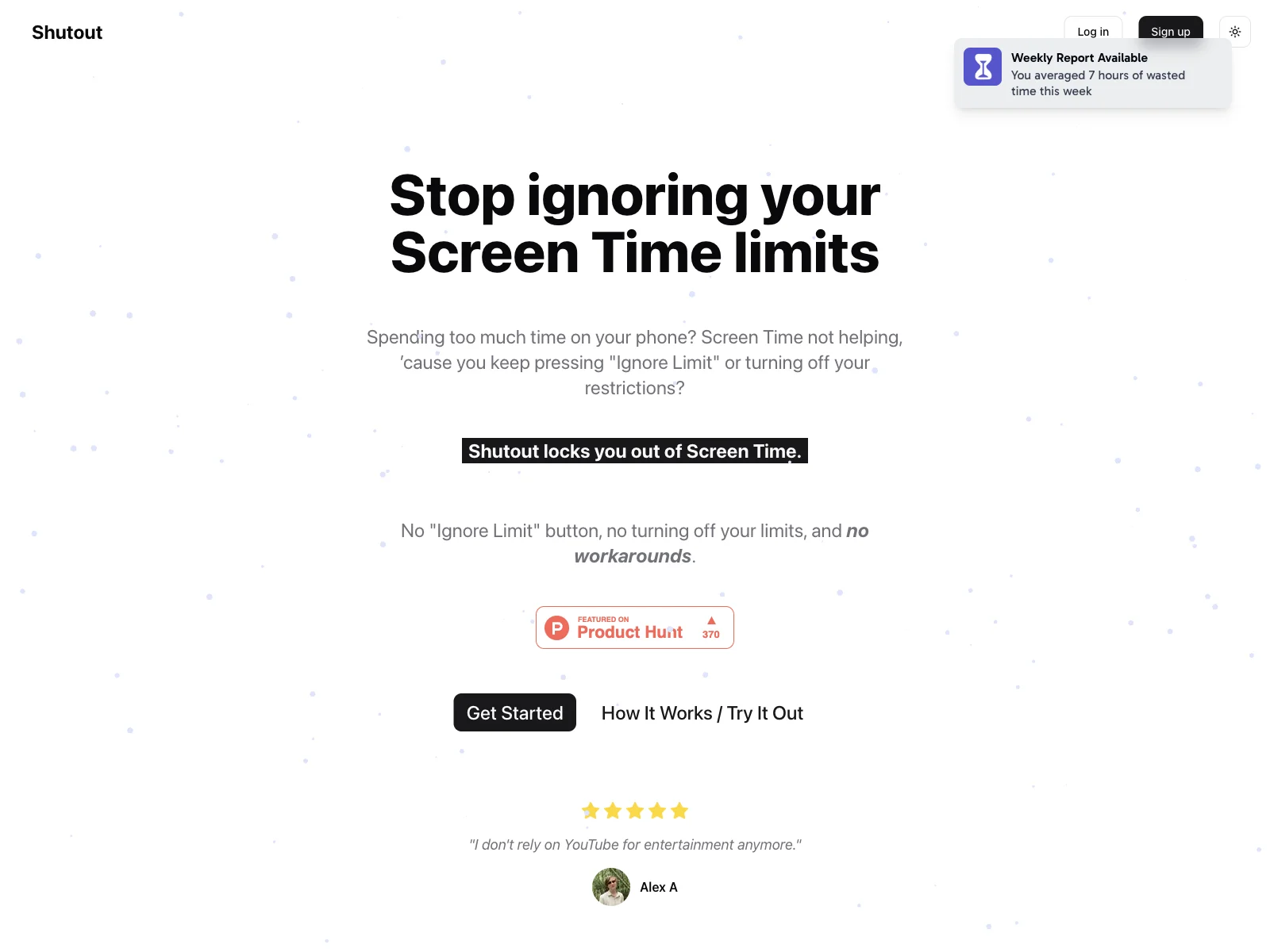In today's digital age, managing screen time has become a significant challenge for many. Despite the best intentions, the temptation to bypass Screen Time limits is all too common, leading to prolonged device usage and its associated drawbacks. Enter Shutout, a revolutionary AI tool designed to make Screen Time limits truly effective by eliminating the loopholes that allow users to ignore or disable them.
Shutout works by integrating seamlessly with your device's existing Screen Time settings. Once you've set your desired limits, Shutout takes an innovative approach to ensure you stick to them. It prompts you to set a password in a complex, forgettable manner, effectively removing the "Ignore Limit" button and preventing you from turning off your restrictions. This unique method ensures that your Screen Time limits are enforced without relying solely on willpower.
Moreover, Shutout enhances its effectiveness by disabling Screen Time's "Forgot Password" feature during setup, making it impossible to bypass the restrictions through conventional means. The password is securely saved without being displayed to you, and accessing it later requires navigating a "willpower wall"—a tedious process designed to deter casual bypass attempts while still allowing access in genuine emergencies.
Shutout stands out from other app blockers and Screen Time solutions by offering a no-compromise approach to digital wellbeing. Unlike traditional app blockers that can be easily disabled in settings or Screen Time's built-in features that rely heavily on user willpower, Shutout provides a robust solution that ensures your limits are respected. With affordable pricing options, Shutout is an accessible tool for anyone looking to take control of their screen time and improve their digital habits.
By leveraging AI technology, Shutout not only enforces Screen Time limits but also fosters a healthier relationship with technology. It's an essential tool for individuals seeking to reduce their screen time, enhance productivity, and prioritize their mental and physical wellbeing in the digital era.

